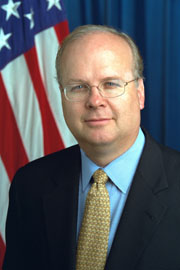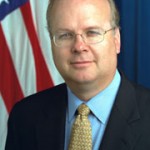
By Karl Rove
Partisan gridlock in Washington, the two parties at each other’s throats. The economy wracked by disruptive new technologies and jostled by rising foreign competition. A growing concern that the divide between the rich and poor is growing.
If that sounds like America today, it was actually where the country stood during the election of 1896, only things were worse. There had been five presidential elections in a row where no one received 50% of the vote. In two of them, the winner in the Electoral College lost the popular vote – and one of those contests involved a five-month dispute about the outcome in Florida.
For 20 out of 24 years, the government was divided with one party holding the White House and the other controlling one or both houses of Congress. The result was stalemate on the major issues of the day.

The economic divide was made worse by the lingering effects of the Civil War, which had a major impact on American politics, especially in the South where powerful myths were woven to justify succession and slavery and explain away defeat as the result of Northern barbarity and material advantage.
Southern resentment of the North was exacerbated by the differences in economic modernization between the regions. The North ended the war with its manufacturing base intact while the South saw most its factories and much of its agricultural production disrupted. The economic disparity only increased as the economic growth in the North and Midwest outstripped that in the South in the decades after the Civil War.

At the time, many Southern farmers were forced to participate in the crop lien scheme where local “furnishing merchants” supplied them with necessities in return for title to their crops. At “settlin’ time” when the harvest came in, the farmers’ debts routinely exceed the value of their crops, making them “another day old and deeper in debt.”
In 1896, both Democratic and Republican candidates addressed these economic concerns. William Jennings Bryan, the 36-year old Democratic nominee, lashed the Northern Money Power, Wall Street and the foreign financial houses on which the U.S., a developing country, relied for investment. His was a negative campaign which deliberately pitted class again class and region against region, with Bryan calling the industrial East “the enemy’s country.”

By contrast, his opponent, Republican William McKinley, deliberately struck a note of national reconciliation, saying that Americans were in this together. The fortunes of labor and capital were inexorably tied. This led McKinley to emphasize both economic and national unity.
One way the McKinley campaign showcased these appeals was to do something that no Republican presidential candidate had done since the end of the Civil War: meet with a group of ex-Confederates.
On the afternoon of October 9, two large trainloads arrived in Canton, Ohio, McKinley’s hometown, disgorging thousands of men, many in butternut or grey uniforms, along with their families. These were Confederate veterans, mostly from Virginia’s Shenandoah Valley, where McKinley had fought at first as an enlisted man and then, after battlefield promotions for valor, as an officer with the 23rd Ohio. Rev. Abram P. Funkhouser of Harrisonburg, Virginia, had organized the Southerners.
The former rebels were met at the depot by a mounted honor escort, a Grand Army of the Republic band and several hundred Union veterans in their blue wartime uniforms. The wives of the GAR members presented the Southerners an elaborate silk banner to mark the visit. Then with the band blaring and American flags flying, the Southerners marched to the Tabernacle, a local meeting hall, where Canton women served lunch to the men and their families as they waited for one more trainload of their comrades to arrive.
Each ex-Confederate was given a knife from Canton’s Novelty Cutlery Co. engraved with the American flag, McKinley’s portrait and the words, “No East, No West, No North, No South, the Union Forever.” There were matching badges, with ribbons half blue and half grey, topped with a red, white and blue rosette, and bearing a similar sentiment with a medallion featuring portraits of McKinley and his running mate, Garrett Hobart.

By 4:30 P.M., the final train had arrived and Southern men gathered in the Stark County Courthouse Square behind their new banner that read “United We Stand.” The reverse displayed an American eagle resting on a shield with the words, “Presented to the ex-Confederate Veterans of the Shenandoah Valley, Virginia, by the ex-Union Veterans of Canton, Ohio.” They were joined by groups of Union veterans and Northern and Southern units mingled together, the men formed up behind bands and flag bearers and then marched up North Market Street. The sidewalks were packed with cheering spectators, standing under billowing flags and patriotic bunting. Many people were weeping as former battlefield adversaries marched together in a display of national unity. The march ended at a stage built on McKinley’s lawn; a crowd jammed the intersection to witness the historic moment.
McKinley was moved by the presence of men he may have faced in battle. His remarks were deeply personal. “Patriotism is not bound by State, or class, or sectional lines,” he told the Southerners, “we are a reunited country. We have but one flag…Sectionalism was surrendered at Appomattox.” His campaign stood for “Country first, Country last and Country with stainless honor.” McKinley noted this was the first time a Republican presidential candidate had met with ex-Confederates and urged veterans North and South to support “the enthronement of justice and the supremacy of law.”
The crowd cheered what was an intensely emotional moment, both for McKinley and the former combatants. Speeches over, the Southern men filed across the porch to shake the Republican Presidential candidate’s hand before returning to the Tabernacle for dinner. The Confederate veteran bands offered a concert in the Courthouse Square before their trains left for Virginia at midnight.

It is hard now from a distance of nearly 120 years to understand what a powerful moment this had been. America had not seen the like of it since Lee surrendered to Grant 31 years before. And that McKinley – who had enlisted as a private at age 18 to answer Lincoln’s call to save the Union and then fought through to the war’s conclusion, ending the conflict as a major – had caused such an event to happen spoke volumes about his character and purpose.
Four weeks later, McKinley was elected the 25th president of the United States with the largest popular margin since Grant’s reelection in 1872. And while the divide between North and South was not erased, sectional tensions eased, the bitterness of the war receded and nearly four decades of Republican dominance followed. Such was the result of a remarkable campaign in which one candidate sought to bring the country together while another was willing to tear it apart to win.
Mr. Rove, a former deputy chief of staff for President George W. Bush, helped organize the political-action committee American Crossroads. He is the author of “The Triumph of William McKinley: Why the Election of 1896 Still Matters.”

